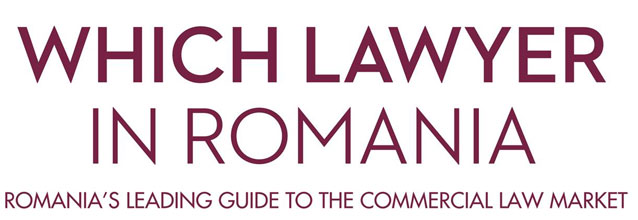
by Georgiana Singurel and Alexandru Lascu, Reff & Associates, member of Deloitte Legal
The legal framework governing public private partnerships and concessions of works and services was significantly reshaped in 2016. In this respect, in May 2016 the new legislative package on public procurement and concession of works and services was enacted, replacing the previous regulations, including former PPP Law no. 178/2010. Also, in December 2016 the new PPP Law was adopted.
The law on concession of works and services is now fully functional and concession projects may be launched, having full legal support, as the methodological norms for the application of the law were enacted in December 2016. On the other hand, projects under the new PPP Law will still have to wait, as the methodological norms for the implementation of the law are still under discussions, although the deadline for issuing them, respectively 90 days as of the entering into force of the PPP law, was exceeded.
Concessions of works and services, as well as the public private partnerships, are instruments allowing the cooperation between the public and private sector for the purpose of developing public interest objectives or performing public interest services.
Concession is part of the extended category of public private partnerships, taking into account the definition of the latter by legal scholars and the European Commission guidance. In this respect, the public private partnership mechanism, in its extended sense, as the European Commission has mentioned in the “Green Paper on public-private partnerships and Community law on public contracts and concession”, is based on various forms of cooperation between public and private sector, which “ensure the funding, construction, renovation, management or maintenance of an infrastructure or the provision of a service”.However, at a national level, the distinction between concessions of works and services and public private partnerships is made.
By accessing these instruments, the public partner aims to overcome the budgetary constraints that impede on the public sector, temporarily transferring in the private sector the burden of performing the necessary investments for public interest projects. At the same time, the private partner have an opportunity to invest in profitable projects, considering that both PPP law and the law on concession of works and services provide that projects shall allow the recovery of the investment as well as a reasonable profit margin. Profitability is sustained through availability payments made by the public partner, granted under the condition that the services and works performed by the investors comply with certain quality parameters.
At European level, the concession and public private partnerships were and still are often used for the implementation of a wide range of public interest projects in fields that cover road infrastructure, airports, public transportation, healthcare infrastructure, construction of administrative buildings or supply of water and sewerage services, national defense and education services. The total value of public private partnership projects implemented in the European Union between 2000 and 2015, amounted to Euro 270 billion according to the European Commission’s data. Good practice examples can be found in France, Germany, Great Britain, Netherlands, Spain or Portugal.
A series of successful projects under the form of concession of works and services have been implemented in Romania, especially in the fields of water and sewerage services, as well as in the development of local infrastructure, such as underground public parking or the net city project for the development of the Bucharest optical fibre network. However, the pace under which such projects have been performed, as well as the success rate of the projects have not reached the level of the ones implemented in other European Union states. The underlying motifs are various, pertaining to the complex and, in some areas, rather unclear legal framework, especially in relation to the public-private partnership projects where the public authority should have a significant financial involvement in the implementation of the project, as well as to the lack of experience of public administration in this type of projects. Moreover, no significant PPP project was implemented under the former PPP Law no. 178/2010.
However, the new legislative framework enacted in 2016, governing concession of works and services and PPPs, eliminated a material part of the difficulties in implementing these types of projects.
The new regulations establish a clear distinction between concessions of works and services and PPPs, issue that under the previous legislation was a source of debates and comments. In this respect, the new PPP law clearly states the cases in which it shall be applicable, specifically only when the income of the project company is generated, in its entirety or in majority, by payments performed by the public partner, or by other public bodies in the benefit of the public partner.
Also, the new regulations entail the material advantage that they create a clear legal framework for the implementation of projects where the majority of the financial contribution is supported by the public partner. Under the previous regulations, such projects could not be implemented as concession of works or services, because the private partner could not recover its investments without the public partners’ majority contribution. Such examples are found in transport infrastructure or medical infrastructure projects, the costs of which cannot be recovered without the significant financial contribution of the public partner.
Moreover, the new PPP law brings another real progress, providing the public partner’s possibility to participate financially in the project not only in the operation phase, but also in the construction phase, for the performance of the works. The financial participation of the public partner in this stage is currently limited to EU non-reimbursable funds, yet there are discussions that this limitation will be eliminated in the near future. Under the previous legislation, the performance of many projects was impossible because there was no legal framework enabling the public partner to contribute financially in the construction phase, leaving the entire financial burden for performing the works with the private investor.
The new PPP law correlates the awarding procedures with the corresponding EU Directives in the field of public procurement and concession. Such correlation was not provided under the previous regulation, issue that led to major criticism. In this respect, the new PPP law provides that contracts will be awarded in accordance with the national laws implementing EU Directives on public procurement and concessions.
The concession law also introduces highly important new elements for the implementation of concessions of works and services projects, the most important being clear rules on the amendment of ongoing contracts and the step-in right of credit institutions in case of non-performance by the concessionaire. Moreover, the concession law introduces new qualification and awarding criteria, contributing to the implementation of the projects in efficient and environmental friendly conditions.
Nevertheless, besides all the positive aspects provided by the new legal framework, there are certain aspects that still require additional clarifications, especially in respect to PPP the public-private partnership projects. The most important issue regards the qualification of such projects as on-balance or off-balance projects. In this respect, pursuant to the rules and procedures of Eurostat, the assessment of the percentage under which the public partner controls the economic activity of a company founded by way of the project in a public-private partnership, is essential in order to determine the qualification of such a structure. While from an accountancy perspective, the on-balance or off-balance regime of a public-private partnership structure is assessed in relation to the evolution of such structure and the demand and offer risks. The relevant provisions of the secondary legislation regarding public-private partnerships, as well as the public finances legislation, should regulate in a detailed manner the assistance and cooperation mechanism used by the national statistics authority, in order to obtain the ex-ante assistance for a public-private partnership from Eurostat, in order to establish the possible state funds that have to be allocated upon the initiation of the project.
The new legislation brings significant improvements for the legal framework governing the cooperation of the public and private sector, enabling the performance of a larger array of projects, facilitating the participation of private investors and permitting a significant financial contribution of the public partners in projects where this is essential. The necessary clarifications to the PPP law are expected to be included in the methodological norms for the implementation, which would eventually enable the launch of such projects.



 May 29, 2017 10:53
May 29, 2017 10:53 










